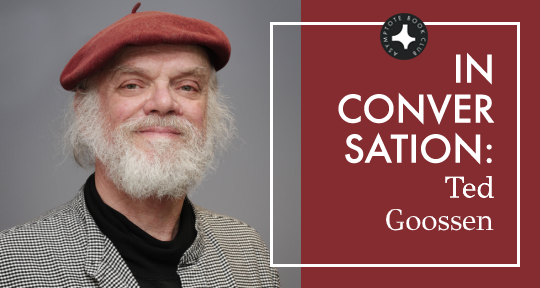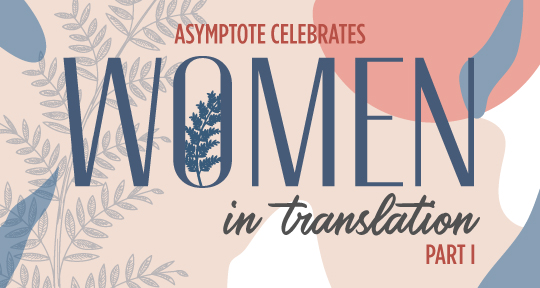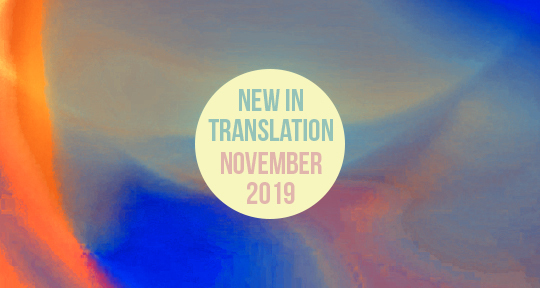This week, our editors on the ground are bringing news of book fairs, prestigious awards, and new mediums for well-loved texts. Suhasini Patni takes us through the JCB Literary Prize longlist, David Boyd introduces a new adaptation of Banana Yoshimoto, and Eva Wissting welcomes back the revitalised, in-person edition of the Gothenburg Book Fair. Read on to find out more!
Suhasini Patni, Editor-at-Large, reporting from India
August and September have been the months of literary awards in India. The fourth iteration of the JCB Literary Prize, known as India’s most “valuable literary prize” has announced its longlist; the panel of judges—“author and translator Sara Rai—who will act as chair, 2018 JCB Prize-winner Shahnaz Habib, designer and art historian Dr. Annapurna Garimella, journalist and editor Prem Panicker, and writer and podcaster Amit Verma”—have chosen mainly debut novels for the longlist.
There are also three novels in translation, all from Malayalam. Notably, the prize last year went to Moustache, written by S. Hareesh and translated from Malayalam by Jayasree Kalathil. The books on the longlist are: Delhi: A Soliloquy, written by M Mukundan (translated by Fathima EV and Nandakumar M), Anti-Clock by VJ James (translated by Ministhy S), and The Man Who Leant to Fly but Could Not Land by Thachom Poyil Rajeevan (translated by PJ Mathew).
Delhi: A Soliloquy was the winner of Ezhuthachan Puraskaram, the highest literary award given by the government of Kerala. The book is set during the 60s-80s and follows the lives of Malayalis living in Delhi, exploring how the daily existence of migrants are full of disruption and longing. While the capital undergoes a war with China, the Emergency, and the anti-Sikh riots, the families struggle to earn money to send back home. “Delhi’s underbelly is laden with squalor and misery. I wanted to talk about these dark sides of the city,” said the author. But the loneliness and alienation of migration is captured through a discussion on language.
She didn’t know Hindi, and no one spoke Malayalam. For a few months, she had to live without language. For the first time in her life, she understood what it meant to be isolated.
The New India Foundation also announced its longlist for the fourth edition of the Kamaladevi Chattopadhyay NIF Book Prize, celebrating excellence in non-fiction writing. The foundation is also currently accepting translation fellows for work in non-fiction. The mentors for this fellowship include writers like Ayesha Kidwai, Vivek Shanbag, and Rana Safvi among many others. READ MORE…











Announcing our August Book Club Selection: People From My Neighborhood by Hiromi Kawakami
The portrayal and analysis of collective experience makes this a text that truly meets our moment.
As we continue into the latter half of this increasingly surreal year, one finds the need for a little magic. Thus it is with a feeling of great timeliness that we present our Book Club selection for the month of August, the well-loved Hiromi Kawakami’s new fiction collection, People From My Neighborhood. In turns enigmatic and poignant, as puzzling as it is profound, Kawakami’s readily quiet, pondering work is devoted to the way our human patterns may be spliced through with intrigue, strangeness, and fantasy; amongst these intersections of normality and sublimity one finds a great and wandering beauty.
The Asymptote Book Club aspires to bring the best in translated fiction every month to readers around the world. You can sign up to receive next month’s selection on our website for as little as USD15 per book; once you’re a member, you can join the online discussion on our Facebook page!
People From My Neighbourhood by Hiromi Kawakami, translated from the Japanese by Ted Goossen, Granta, 2020
Like a box of chocolates, Hiromi Kawakami’s People From My Neighbourhood (translated from the Japanese by Ted Goossen) contains an assortment of bite-sized delights, each distinct yet related. This peculiar collection of flash fiction paints a portrait of exactly what the title suggests—the denizens of the narrator’s neighborhood—while striking a perfect balance between intriguing specificity and beguiling universality. The opening chapters introduce readers to each of the neighborhood’s curious inhabitants, while later chapters build upon the foundation, gradually erecting a universe of complex human relationships, rigorous social commentary, immense beauty, and more than a little magic.
Existing fans of Kawakami’s will surely recognize these common features of her award-winning body of work, while first-time readers will likely go searching for more. Goossen is better known as a translator of Murakami and editor of the English version of the Japanese literary magazine MONKEY: New Writing from Japan (formerly Monkey Business); ever committed to introducing Anglophone readers to non-canonical Japanese writers, he brings his flair for nonchalant magical realism to this winning new collaboration.
The first story, “The Secret,” introduces readers to the anonymous narrator and sets the tone for the collection. First presented as genderless, (we only find out later that she is female) she discovers an androgynous child, who turns out to be male, under a white blanket in a park. The child, wild and independent, comes home with her. Despite occasional disappearances, he keeps her company as she ages, all the while remaining a child. In this story, we receive her only concrete—but general—description of herself: “I’ve come to realize that he can’t be human after all, seeing how he’s stayed the same all these years. Humans change over time. I certainly have. I’ve aged and become grumpy. But I’ve come to love him, though I didn’t at first.” This one statement exemplifies many of the collection’s trademark characteristics and overarching themes: a version of time in which past, present, and eternity coexist, the supernatural, and the narrator’s fascinating method of characterization. READ MORE…
Contributor:- Lindsay Semel
; Language: - Japanese
; Place: - Japan
; Writer: - Hiromi Kawakami
; Tags: - family
, - fantasy
, - Japanese literature
, - Magical Realism
, - social commentary
, - strangeness
, - Women Writers